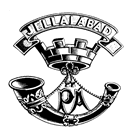
Clifford Francis B. Daymond

6th Battalion
Private 25950
 | Clifford Francis B. Daymond |  |
| Somerset Light Infantry 6th Battalion Private 25950 | ||
| Killed 22nd August 1917 |
Clifford Daymond's Parents | ||
|
Clifford Francis B. Daymond was the son of Francis Daymond and Laura Wilhelmina Daymond (née Bryer). Francis DaymondClifford’s father Joseph Francis Daymond (probably called ‘Francis’; the 1881 census lists him as such and it is also Clifford's second given name) grew up in Devon as one of at least seven children in a farming family. At the age of 7, he was registered on the 1871 census as the son of a farmer (Thomas Daymond) who employed 1 labourer on 118 acres of land at Westacott Farm in Petrockstow. Just three years later, however, the farm was advertised for sale. Perhaps the farm failed under his father’s management, or perhaps his father was a tenant and had to vacate when the owner sold the farm, but by 1881, when Joseph was 18, his family had been dispersed over a wide area. His parents were in Herefordshire, with his father listed as a lowly ‘cowman’. Francis himself was a grocer’s assistant in Torquay and living in a boarding house in Abbey Road, run by a 76-year-old Irish woman. Two of Francis’ elder brothers were registered in 1881 as attendants in Lancaster County Lunatic Asylum in the far north of England. One other elder brother, Frank, was keeping Joseph Francis company in Torquay, however and lived nearby in Fleet Street, working in a draper’s shop. Laura BryerClifford’s mother Laura Bryer was born in Rugby in Warwickshire, the daughter of a ‘clerk in a commercial office’ and one of at least five children. The family’s address in 1861, when Laura was 6 months old, was in Round Street, Rugby. By 1871 the Bryer family had moved to 1 Bayes(?) Hill in Cheltenham, but the census shows her father as being away from the family at that time. He was staying at a boarding house at 8 Albert Park in Bristol and studying theology, possibly at the University of Bristol. By 1881, the whole family had moved to Teath Road in Stapleton, Bristol, and Laura’s father Clement A. Bryer was listed as an ‘independent minister’, meaning that he was the minister of a non-Church of England church. It seems he had been a Congregationalist minister in Falmouth at some point, and newspaper entries in the Bristol Mercury & Post from the early 1880s show that he regularly preached at the Bethel Ship Mission (part of the Bethel Union) in its temporary premises on Broad Quay in Bristol. As was common with non-conformist preachers, he also spoke at numerous other churches and meetings around the area. He seems to have been a keen supporter of temperance (abstinence from alcohol), as so many non-conformists were. A further notice in 1888 mentions Clement A. Bryer relinquishing the post of minister of a church in St Briavels (Forest of Dean) due to ill health. We don’t know whether the whole Bryer family had moved to St Briavels in the mid-1880s, but by the end of the 1890s Laura’s parents lived on Gloucester Road in Bishopston, Bristol. | ||
  | ||
|
TOP: Mention of Clifford's maternal grandfather Clement Bryer at Bristol's Bethel Ship Mission in an 1883 listing of church services. BOTTOM: The 1888 item detailing Clement Bryer leaving St Briavels. |
|
There was also a minister called Clement F Bryer at Hitchin Congregational Church in Hertfordshire from 1896-1911. Laura’s elder brother was listed as Clement A F Bryer in the 1881 census, so it is possible that he followed his father into the ministry and moved to Hitchin. In 1881 Laura – aged 20 – was listed as a milliner. It is not known how or where Francis Daymond met Laura Bryer.
It is possibly a rather tenuous link, but Francis’ elder brother Frank was
listed in the 1881 census as being a ‘draper’s assistant’ in Torquay. In later
years, an ‘F Daymond’ was operating a draper’s business from 410 High Street,
Cheltenham and posted advertisements in the local press for young ladies to
serve as millinery apprentices. We know that Laura was a milliner and had
previously lived in Cheltenham. So there may be a connection there. The records show the marriage between Francis & Laura in 1884 as having taken place in ‘Barton Regis’; this was the name of a short-lived rural district on the north-eastern outskirts of Bristol, near where Laura’s family was living. Barton Regis covered the area of Filton, Shirehampton, Henbury, Stoke Gifford, Westbury-on-Trym and Winterbourne, now all part of South Gloucestershire. |
The Daymond Family |
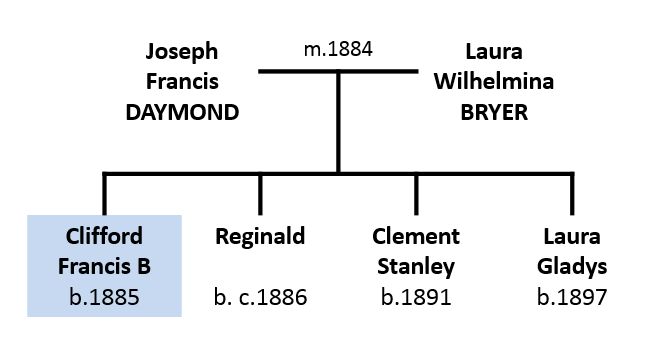 |
|
Clifford was the eldest son born to the couple, in 1885. His birth and that of the next eldest son, Reginald (known as ‘Reggie’), were both registered in the Barton Regis district (although the 1911 census erroneously lists them as having been born in Bath), so we know that the family lived there until 1886. Clifford’s parents had moved to Bath before the 1891 census and this probably coincided with (his father) Francis beginning work at the Bath department store ‘Colmers’ in 1889. Specifically, the census shows Francis and Laura living at 32 Otago Terrace, which is in Larkhall, near the Bladud’s Head public house, but while the household included a general servant (Augusta Fido, age 19), there is no sign of the children. |
|
A further check of the census reveals that Clifford and Reggie were living (or at least staying) with Laura’s parents (the Bryer family) at 386 Gloucester Road in Horfield, Bristol. |
|
We can assume that the boys Clifford and Reggie joined their parents in Bath before too long, perhaps soon after the third child, Clement Stanley (named after his grandfather Clement Bryer, but known as ‘Stanley’) was born in 1891. |
|
The family was complete with the birth of Laura Gladys in 1897. Soon after this they moved to 5 Cynthia Road, from where it would have been a very short walk to South Twerton School. |
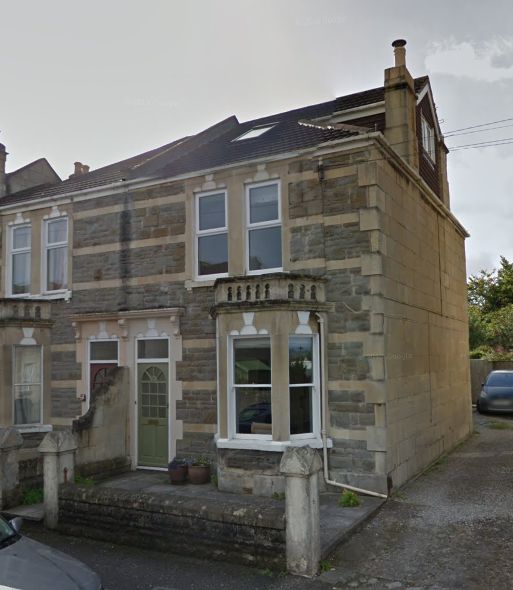 | ||
|
5 Cynthia Road. Home of the Daymond family circa 1900-1908. |
|
In 1908, the family moved again to 41 King Edward Road, where Clifford’s parents remained for many years. |
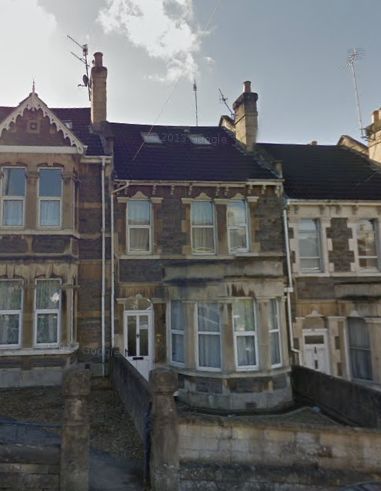 | ||
|
41 King Edward Road |
|
The 1911 census shows that Clifford, then 19, had become a tailor’s apprentice at that time. His younger sister Gladys appeared in frequent newspaper items referring to her musical progress as a pianist. Clifford's Marriage Of all the 33 names on the Oldfield Park Junior School, Clifford Daymond is one of the very few
to have married. In 1913, Clifford
married Eva Harris, the daughter of a Bristol bootmaker who was also listed as
sub-postmaster in what was once a shop-lined Bath Road in Knowle. Now the main
road where Eva grew up, on the Bath side of the Three Lamps junction, has been
widened and many of the buildings – particularly on the North side – removed.
Very little remains to testify to the road’s previous existence. |
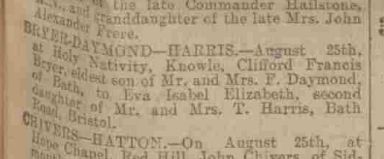 | ||
|
The announcement in the Bath Weekly Chronicle & Gazette in 1913 of
Clifford’s forthcoming marriage to Eva Harris at Holy Nativity Church, Knowle,
Bristol. The listing of his surname as ‘Bryer-Daymond’ is unusual; it does not
appear thus on any other official documents, but this may solve the mystery of
his third initial (“B”) which is not spelled out on any other surviving documents.
Below: Holy Nativity Church (Photo from www.churches-uk-ireland.com). | ||
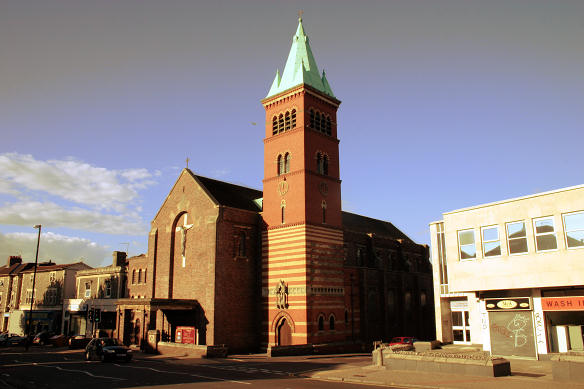 |
| Between getting married and joining up for the First World War, it seems that Clifford and Eva Daymond moved to Torquay, where we know Clifford’s father and an uncle had previously lived. |
Clifford Daymond in WW1 | ||
Somerset Light Infantry Clifford seemingly originally joined the 7th Battalion of the Somerset Light Infantry. His place of enlistment is given as Weymouth. If he had only lived in Torquay for a short period before the war, it is possible that he was still in touch with childhood friends in Bath and wanted to serve alongside them. Hence he might have made for the recruiting office of a regiment in which his friends were also serving. We know that Clifford’s brother (Clement) Stanley, back in Bath, enlisted with the Royal Field Artillery. A medal card also survives for a “Reggie” Daymond, who served in the Duke of Cornwall’s Light Infantry, then the Royal Warwickshire Regiment and finally the Machine Gun Corps. We also know that Clifford transferred at some point to the 6th Battalion of the SLI, with whom he was serving when killed. | ||
Clifford Daymond's Death | ||
|
Clifford died on 22nd August 1917. For details of the action in which he died, we are grateful to a response given on 'Alan Greveson's World War 1 Forum' (on www.circlecity.co.uk) to a request for information from a relative of Clifford Daymond (with whom we have not yet been able to make contact): The 6th Battalion Prince Albert's Somerset Light Infantry served with the 43rd Infantry Brigade in the 14th (Light) Division. In August 1917 the Division was in the area of St Julien, three and a half miles north-east of Ypres. On August 22nd 1917, the Somerset LI and the 6th Bn Duke of Cornwall's Light Infantry were facing Inverness Copse and Glencourse Wood which were held by the enemy and were strongly defended with concrete bunkers.
At
dawn on the 22nd August the Cornwall Light Infantry held a line
opposite Glencourse Wood on the left and running to the right past an
old German fort known as Stirling Castle. In front of the Somersets was
Inverness Copse which was a thousand yards wide and 500 yards deep. The
remains of the Copse contained many concrete blockhouses "hidden, or
half hidden, among the fallen trees and tattered stumps and upheaved
earth". To the north-east of the Copse was an old ruined chateau called
Herenthage Castle. Facing the left of the Light Infantry's position
were three lines of trenches and two blockhouses at "L-shaped Farm" and
"Fitzclarence Farm". On the morning of August 22nd the British artillery bombarded these strong-points and the Light Infantry advanced over the water-logged and shell-holed ground at 7 a.m. They fought their way into Inverness Copse and were followed by some tanks accompanied by Royal Engineers who blew in the doors of the blockhouses. 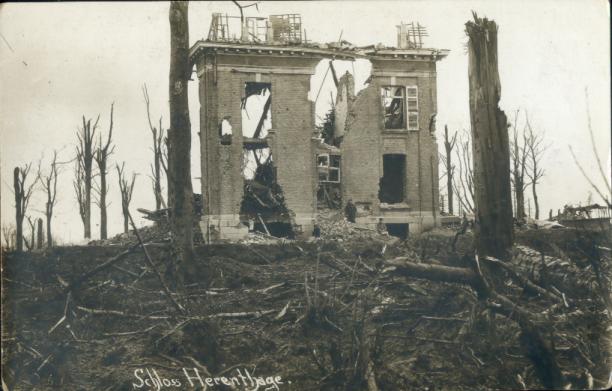 Chateau Herenthage - already a shell from fighting in 1915 The
Somersets fought on to the ruins of Herenthage Chateau where they were
opposed by 120 men of the 145th Infantry Regiment holding out in
concrete chambers. The Somersets took the position, taking prisoner the
only survivor, a German officer. The Somersets held the position with
defensive posts at Herenthage Chateau and in front of Inverness Copse,
while the Cornwalls were held up by the enemy at a fortified farm
called "Clapham Junction". The Cornwalls called for a tank to come up
and fire point-blank into the farm. It
was now 10 o'clock in the morning and the Light Infantry had taken
their objectives. Then the enemy counter-attacked more than once. The
enemy artillery concentrated on Inverness Copse and the enemy infantry
made two attacks which were repelled. A third counter attack enclosed
the Somersets on both flanks. The Somersets sent a runner to Brigade HQ
to say they would have to fall back as they could not hold on. They
fell back to a point half way through the Copse and were supported by
the Cornwalls who put out a defensive position on their flank. At
midday the Somersets fought off another attack. At 2 o'clock in the
afternoon the enemy was seen gathering for an attack on their left
flank. The Somersets called down artillery which dispersed the threat.
The Somersets spent the night holding the Copse under fire. The next
day, tanks and men of the King's Royal Rifles helped break up further
assaults, but although the Light Infantry had taken Inverness Copse,
they could not hold it. The 6th Battalion Somerset Light Infantry lost 61 men killed on August 22nd.
The medal roll entry for Clifford Daymond (above) show that he was initially missing 'Assumed dead', and it was nearly a year later that the following reports appeared in the Bath newspaper: | ||
 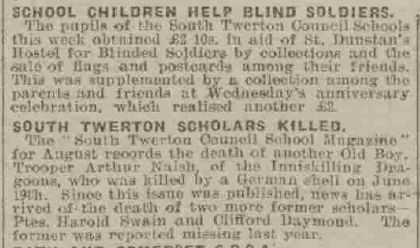 | ||
|
The above notices appeared in the Bath Chronicle & Weekly Gazette in July 1918, nearly a year after Clifford’s death. The lower item on the second piece reports the deaths of Arthur Naish, Harold Swain and Clifford Daymond, while the upper shows South Twerton school families doing their bit to support wounded soldiers. |
Decoration |
|
We need to conduct further research to understand when Clifford Daymond entered the war, as this dictates whether he received a 1914-15 Star medal. He would certainly have received the following medals posthumously: |
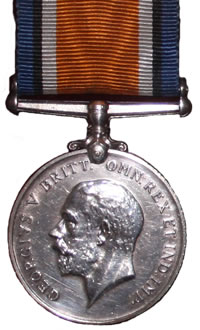 | 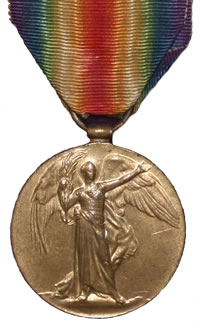 | ||
| British War Medal 1914-18 | Allied Victory Medal |
Commemoration | ||
 | ||
|
Tyne Cot Clifford is commemorated at the Tyne Cot Memorial, between Zonnebeke and Passendale (formerly Paesschendaele) in Belgium. This cemetery is the largest Commonwealth war cemetery in existence. When it became clear that the Menin Gate memorial in Ypres (designed to list the names of soldiers whose grave’s location was unknown) was going to be too small, panels were erected at Tyne Cot. Soldiers who died after 15th August 1917 are listed at Tyne Cot. An online reference states that Clifford is listed on Panel 41 To 42 And 163a. |
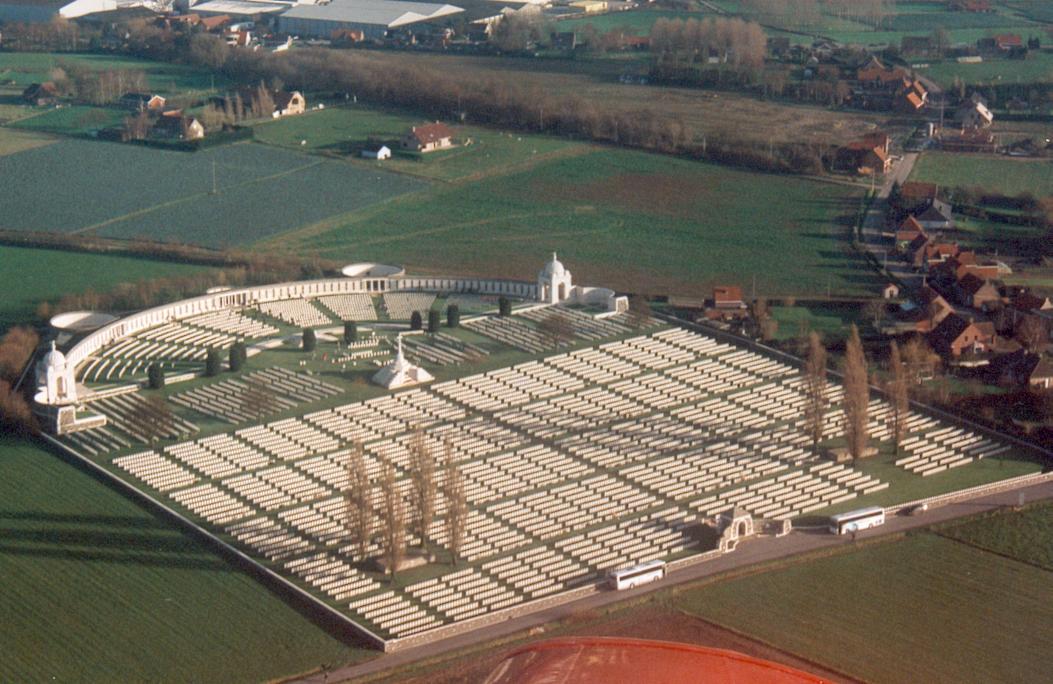  | ||
|
Tyne Cot memorial with its panels of names of soldiers who died in the battles on the Western Front but who have no known grave. [Photo from CWGC]. | ||
| In
June 2019, Tyne Cot Cemetery and memorial was visited by Mike Sumsion
of Bath, who regularly visits the battlegrounds and cemeteries of the
Western Front and who has taken an interest in the Oldfield Park Junior
School WW1 project. Mike took a memorial cross from OPJS on his trip
and placed it at the foot of the section of the Tyne Cot memorial
on which Clifford Daymond's name is inscribed. We are grateful to Mike
for facilitating this act of remembrance on behalf of the
schoolchildren and for providing us with the following photograph: |
 |
|
Bath War Memorial See separate page for details of the Bath War Memorial. Clifford Daymond's inscription: |
 |
|
Lyncombe Parish Memorial Clifford Daymond's name is inscribed on the Lyncombe Parish memorial, now in the Magdalen Chapel on Holloway (see separate page for details of the Lyncombe Parish Memorial): |
Clifford
Daymond’s name (alongside that of Reginald Crocker) on the St Mark's memorial, now displayed at Magdalen Chapel, Holloway. |
|
Family Grave at St. James's Cemetery Clifford Daymond is in the minority of the men commemorated on the South Twerton school plaque by virtue of the fact that he married and also in that he is commemorated on a grave in Bath. That is not to say that his remains were returned to England for burial, but he is commemorated on the grave of his parents in St James's Cemetery on the Lower Bristol Road. If you wish to find the grave, it is shortly after the left-hand fork in the road to the chapels, on the right-hand side. |
TOP: The inscriptions on the family grave relating to parents Laura & Joseph Francis. BOTTOM: Inscriptions on the other side for Clifford and his sister Gladys. Note that the order of interment was such that the parents' names must have been added to those of the children. We assume that the grave was originally that of Gladys and that the parents took the opportunity to commemorate Clifford. |
|
14th (Light) Division Memorial Clifford Daymond is also honoured by a memorial to all those in the 14th Division killed in the course of WW1. The memorial stands at Hill 60, near Ypres. |
14th (Light) Division Memorial |
Further Information |
After WW1Clifford’s wife Eva went on to re-marry a man called Walter Hemphrey, the son of a Nottinghamshire farmer, in 1922 in Basford, Nottinghamshire.
Eva died in Nottinghamshire in 1977. Clifford’s
family in Bath posted regular notices in the Bath
newspaper as a reminder of their lost son and brother (from 1918 &
1921 respectively; the latter was re-inserted annually until 1924): |